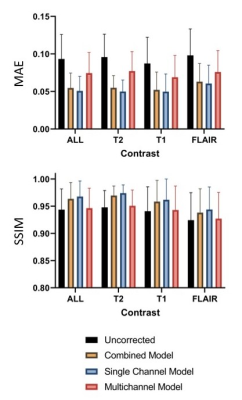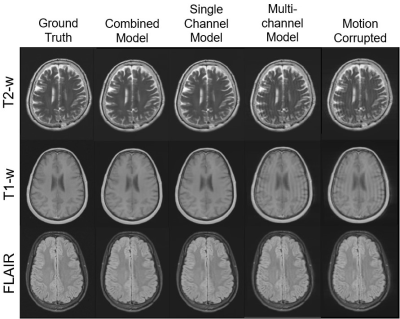Miriam Hewlett1,2, Ivailo E Petrov2, and Maria Drangova1,2
1Medical Biophysics, Western University, London, ON, Canada, 2Robarts Research Institute, London, ON, Canada
1Medical Biophysics, Western University, London, ON, Canada, 2Robarts Research Institute, London, ON, Canada
Motion correction in single-channel images prior to coil
combination improved performance compared to motion correction on coil-combined
images. Simultaneous motion correction of multichannel
data produced the worst result, likely a result of the model's limited modelling
capacity.

Figure 3. Mean absolute error (MAE, mean and standard deviation) and structural
similarity index (SSIM, mean and standard deviation) comparing the ground truth
results to the uncorrected images (black), as well as images corrected with the
combined (yellow), single-channel (blue), and multichannel (red) models. All
differences are significant (p < 0.05).

Figure 4. Example
images for each contrast; T2-weighted (top), T1-weighted (middle), and FLAIR
(bottom). On the left are the ground truth images, and on the right those
containing simulated motion artefacts. The centre three images are those
corrected with the combined, single-channel, and multichannel models (from left
to right).
